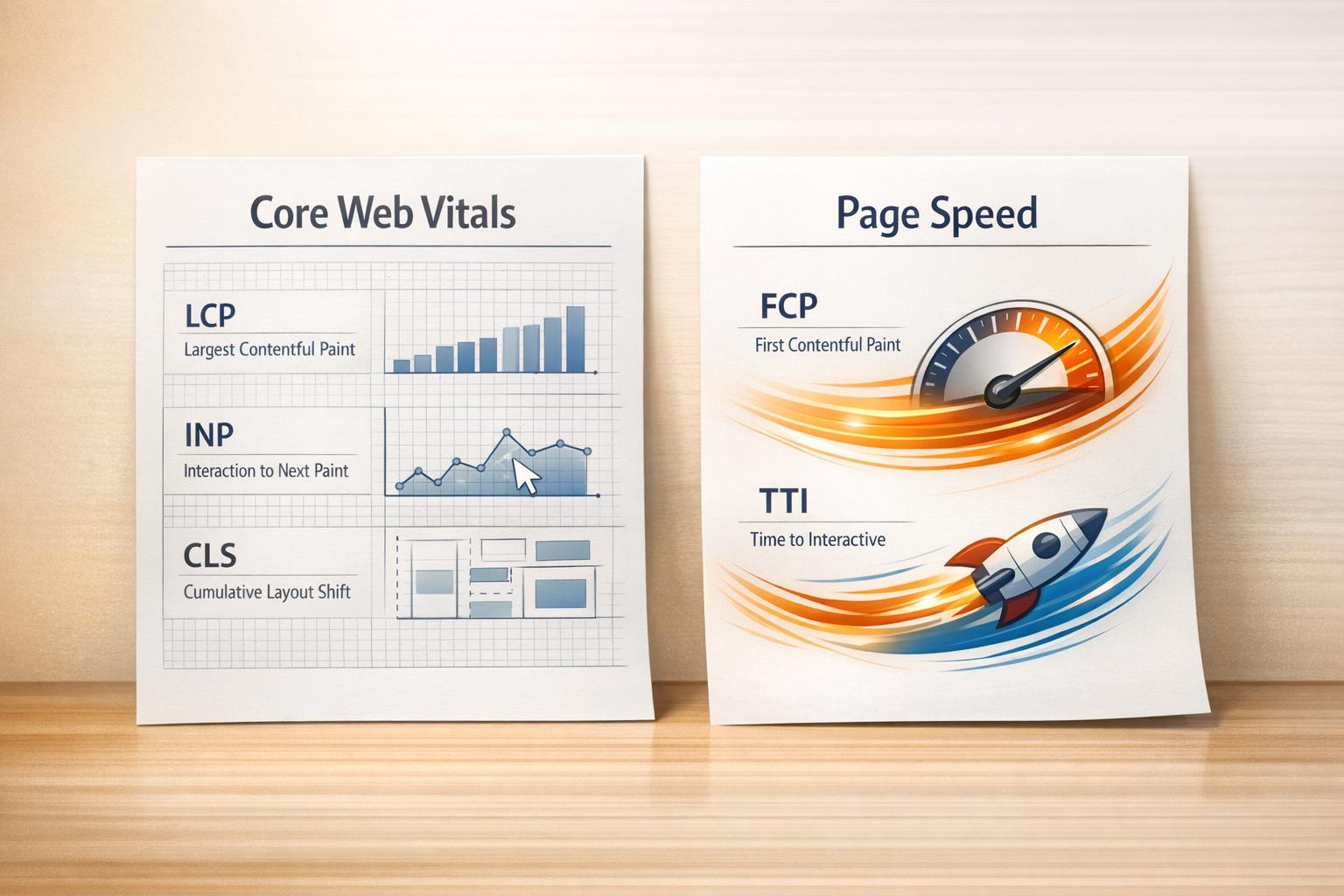

How to Rank in Google AI Overviews: The Complete Guide

How to Rank in Google AI Overviews: The Complete Guide
 12-08-2025 (Last modified: 12-08-2025)
12-08-2025 (Last modified: 12-08-2025)
Quick Takeaways
We know the deal – you don’t have enough time to read our full article on how to rank in Google AI Overviews (silent cry) so here’s the essentials up front::
-
Understand how Google AI Overviews select sources — focus on trust, authority, and topical coverage.
-
Write AI-friendly content — concise, structured, and ready to be pulled into AI-generated summaries.
-
Target entity-based SEO — Google’s AI doesn’t just read keywords; it maps relationships between topics.
-
Use structured data — schema markup increases the chance your content is interpreted correctly.
-
Test variations for AI preference — tools like PageTest.AI help pinpoint which content formats Google favors.
Why Ranking in Google AI Overviews Matters
Google’s AI Overviews (formerly SGE — Search Generative Experience) are reshaping how search results are delivered. Instead of scrolling through multiple links, users now receive AI-generated summaries that pull from various sources.
This is both a threat and an opportunity:
-
Threat: If your site isn’t included in the AI Overview, you could lose traffic to competitors.
-
Opportunity: If you are included, you gain massive visibility – even above traditional #1 rankings.
Nearly 40% of U.S. adults say they would rely on AI-generated answers for quick information over clicking traditional search results. (Pew Research Center)

How Google AI Overviews Choose Content
Unlike standard rankings, AI Overviews use:
-
Topical authority over exact keyword matches.
-
Trust signals from E-E-A-T (Experience, Expertise, Authoritativeness, Trustworthiness).
-
Structured, concise answers that are easy to extract.
-
Semantic relationships between concepts, not just backlinks and CTR.
“AI Overviews aren’t just about ranking well in Google – they’re about becoming the trusted source Google wants to quote.” Ian Naylor, Founder of PageTest.AI
Step-by-Step: How to Rank in Google AI Overviews
1. Master Entity-Based SEO
AI Overviews favor content that demonstrates comprehensive topical authority.
-
Create pillar content covering the entire subject.
-
Link to relevant subtopics and related guides.
-
Maintain consistent entity references for people, brands, and products.
Example:
If your focus is “plant-based protein,” don’t just have a single article – cover recipes, nutritional breakdowns, sourcing, and product comparisons.
2. Write in AI-Friendly Formats
Google AI Overviews prioritize content that’s:
-
Scannable (short paragraphs, bullet points).
-
Direct (clear answers up front).
-
Well-structured (H2/H3 headings with keywords).
-
Rich in semantic variety (related phrases and synonyms).
3Way Tip: Include numbered steps or listicles – AI Overviews often pull these directly into answers.
3. Use Schema Markup Strategically
Schema helps Google understand your content.
-
Article + FAQ schema for blog content.
-
HowTo schema for tutorials.
-
Product schema for e-commerce listings.
“We’ve seen sites jump into AI Overviews within weeks of adding structured schema to high-authority pages. It’s not a magic ticket, but it’s definitely a nudge in the right direction.” Becky Halls, PageTest.AI
4. Prioritize E-E-A-T Signals
Google’s AI systems lean heavily on trustworthiness.
-
Add expert author bios with credentials.
-
Cite reputable sources for facts and stats.
-
Include first-hand experience and case studies.
70% of consumers say they trust brands more when content is written by identifiable experts. (Edelman Trust Barometer)

5. Target Long-Tail & Conversational Queries
AI Overviews excel at answering specific, user-focused questions.
-
Use question-based subheadings (H2/H3).
-
Answer them clearly within the first sentence.
-
Pull from your customer support logs or FAQ sections.
6. Test Content Variations for AI Preference
Google’s AI Overviews are still evolving, what works now might not work in 3 months.
-
Use PageTest.AI to run A/B and multivariate tests on:
-
Opening sentences
-
Headline structures
-
List formats vs. paragraphs
-
-
Measure engagement metrics (scroll depth, dwell time) to identify which variations AI surfaces more often.
Common Mistakes to Avoid
| Mistake | Why It Hurts AI Overview Rankings |
|---|---|
| Walls of text | AI struggles to parse long, unstructured paragraphs |
| Thin content | Lacks depth to build topical authority |
| No schema markup | Reduces machine readability |
| Over-optimized keywords | AI prefers natural language and semantic variety |
Example: Before & After AI-Optimized Content
Before:
Ranking in Google’s AI Overviews requires good SEO and helpful content.
After:
To rank in Google AI Overviews, focus on:
Building topic authority through comprehensive, interlinked content.
Structuring your answers with bullet points and clear headings.
Using schema markup to help Google’s AI understand your page.
The “After” version is direct, list-based, and AI-ready.
Ongoing Optimization for AI Overviews
-
Update content quarterly to remain relevant.
-
Monitor AI Overview appearances with manual searches and rank tracking tools.
-
Track competitor inclusions and identify what formats they’re using.
-
Continuously test and refine with AI-optimization tools.

Final Thoughts
Ranking in Google AI Overviews isn’t about “gaming the system”, it’s about becoming the best answer in your field. By combining entity-based SEO, structured formatting, and continuous testing, you can position your site to be the source Google chooses to highlight.
“In AI-driven search, visibility isn’t earned by chance. It’s engineered through smart, tested, and trustworthy content.” Ian Naylor, Founder of PageTest.AI
FAQ: How to Rank in Google AI Overviews
Q1: How are AI Overviews different from featured snippets?
AI Overviews pull from multiple sources and provide a synthesized answer, whereas featured snippets pull a direct excerpt from one source.
Q2: Does traditional SEO still matter for AI Overviews?
Yes—most AI Overview sources still rank in the top 10 organic results.
Q3: Can I guarantee inclusion in AI Overviews?
No—but optimizing structure, authority, and trust significantly increases your chances.
Q4: Does schema markup directly boost AI Overview rankings?
It improves machine readability, which makes it more likely your content will be selected.
Q5: How often should I review my AI Overview rankings?
At least monthly—Google’s AI selection criteria are evolving quickly.
Q6: Will AI Overviews replace all search results?
Unlikely, but they will dominate for many informational and “how-to” queries.
say hello to easy Content Testing
try PageTest.AI tool for free
Start making the most of your websites traffic and optimize your content and CTAs.
Related Posts

 01-01-2026
01-01-2026
 Ian Naylor
Ian Naylor
Core Web Vitals vs. Page Speed: Key Differences
Compare Core Web Vitals (LCP, INP, CLS) with Page Speed metrics like FCP and TTI — learn their SEO roles, measurement differences, and optimization tips.

 30-12-2025
30-12-2025
 Ian Naylor
Ian Naylor
User Engagement Score Estimator
Estimate your website’s user engagement score with our free tool! See how interactive your content is and get tips to improve user interest.

 29-12-2025
29-12-2025
 Ian Naylor
Ian Naylor
CTA Phrase Planner
Struggling with CTAs? Use our free CTA Phrase Planner to create powerful, tailored call-to-action phrases that convert your audience!
